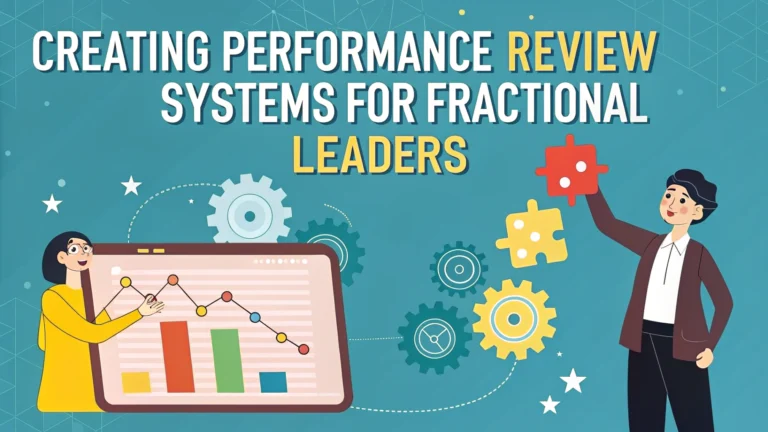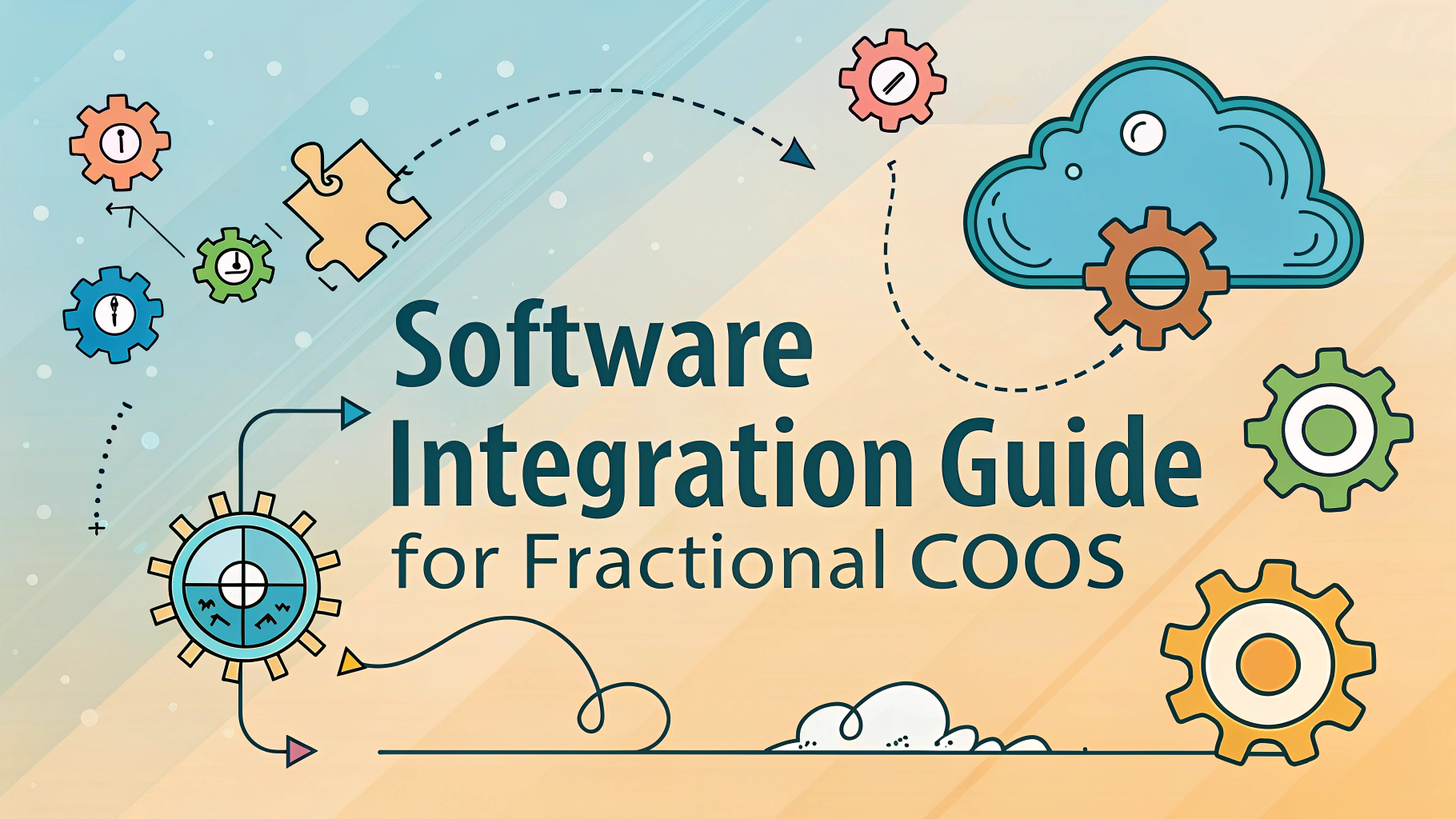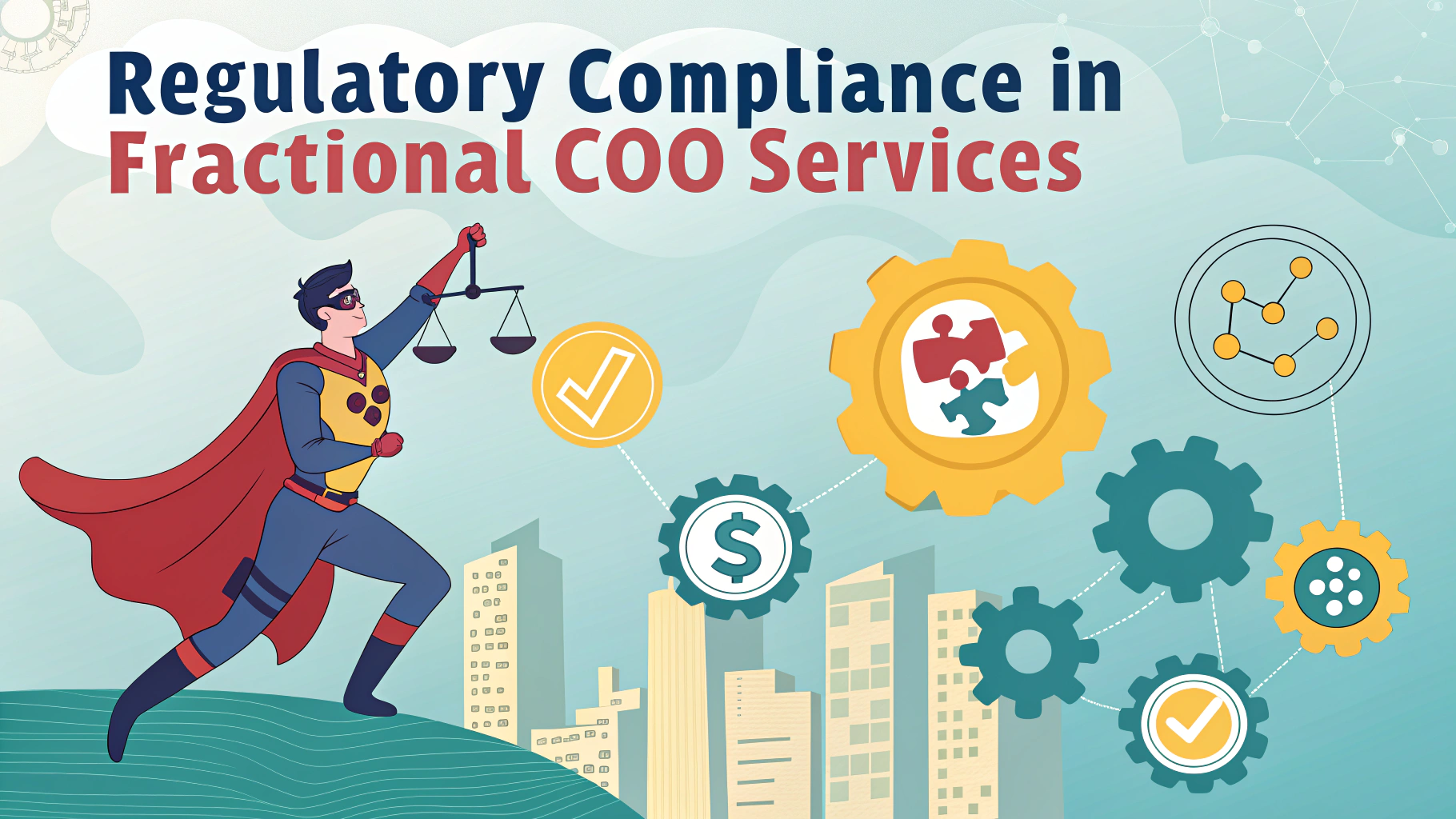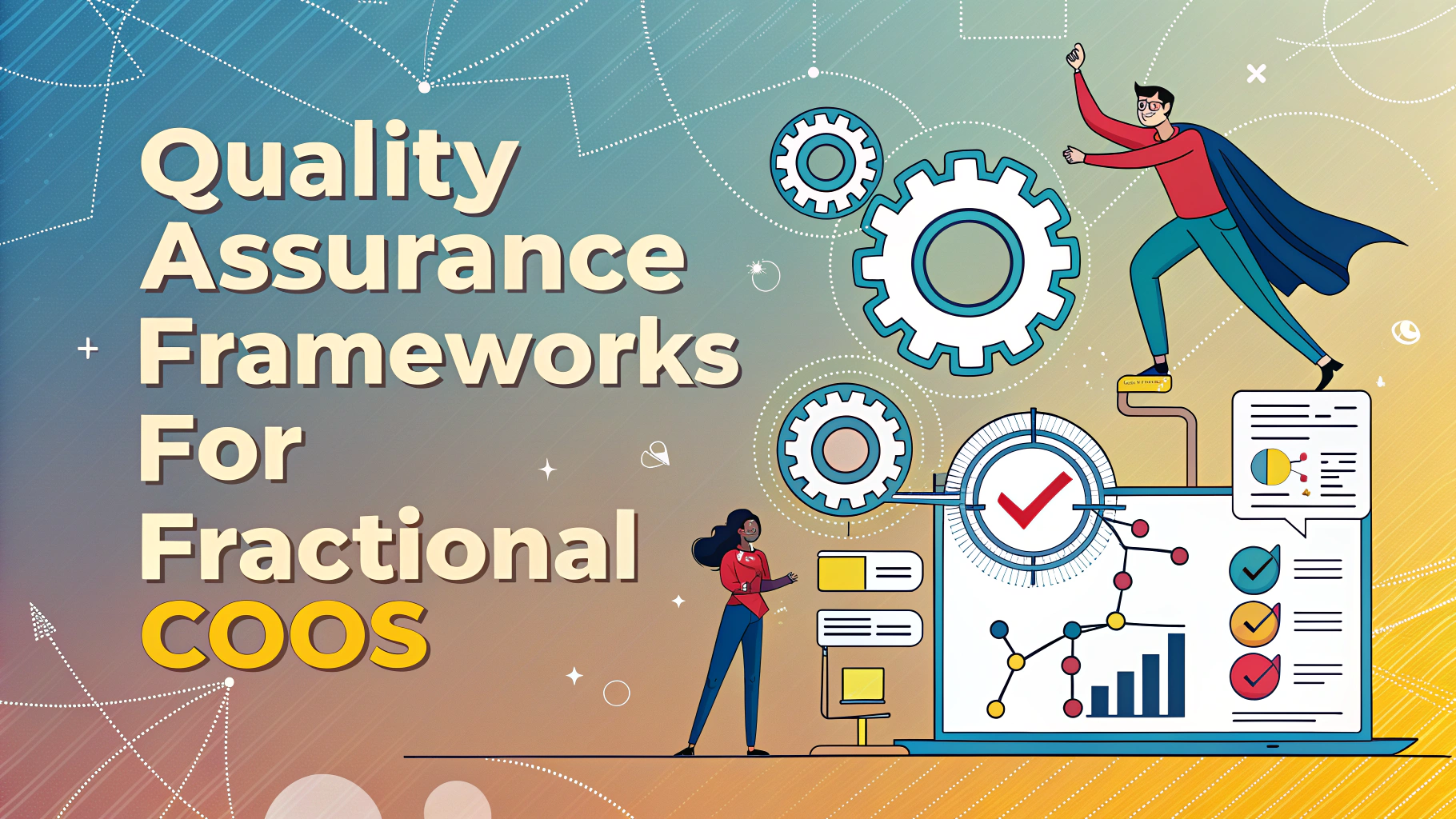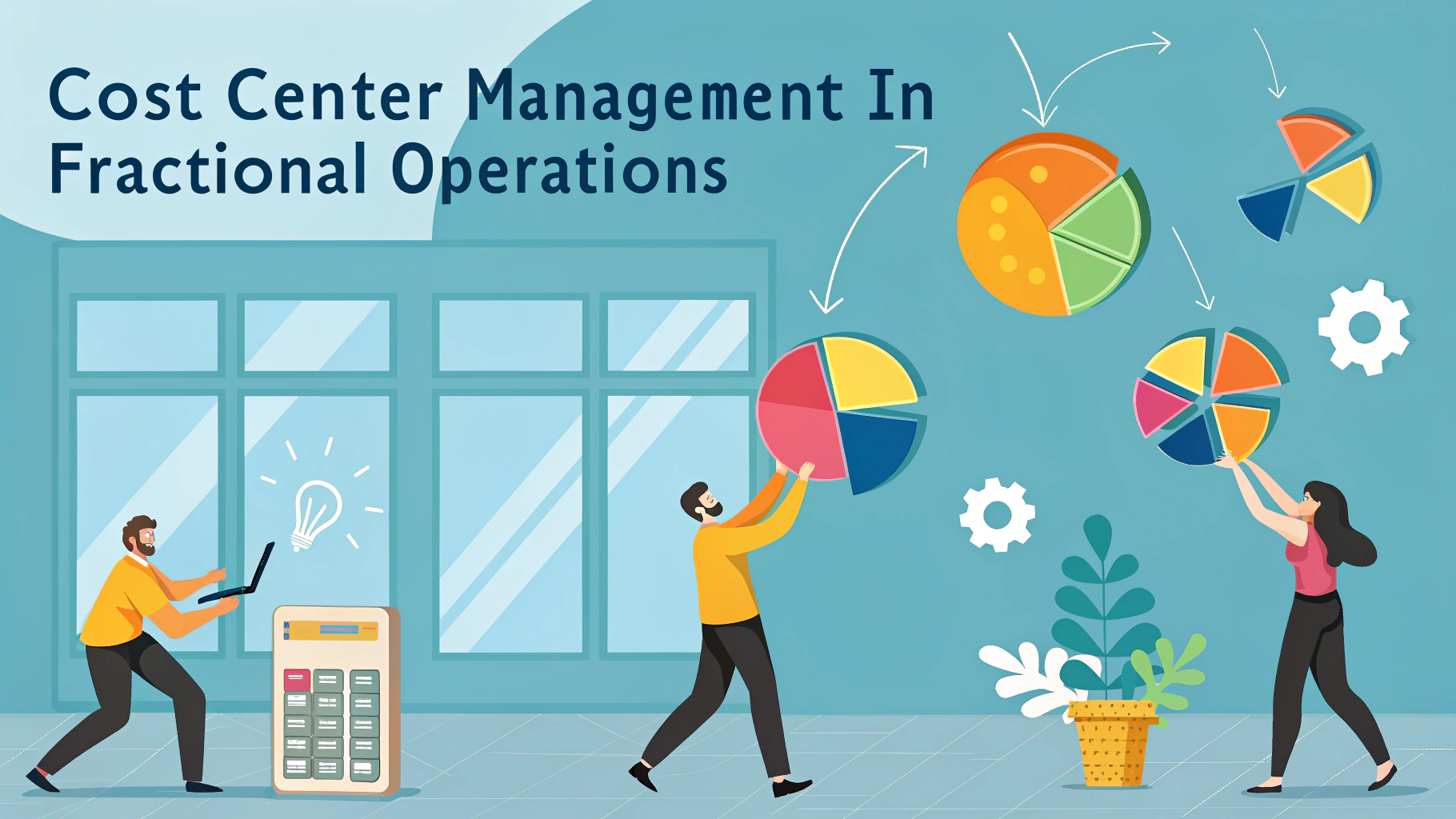Performance reviews present unique challenges when managing fractional executives and leaders who work across multiple organizations.
A well-designed review system needs to account for the part-time nature of fractional roles while still providing meaningful feedback and accountability.
This guide outlines practical approaches for implementing effective performance evaluations specifically tailored for fractional C-suite executives.
Key Components of Fractional Leader Reviews
- Project-based metrics and deliverables
- Client/stakeholder feedback mechanisms
- Documentation of strategic impact
- Time allocation effectiveness
- Team collaboration assessment
Setting Clear Expectations
Document specific objectives and KPIs at the start of each fractional engagement.
Break down larger goals into measurable quarterly milestones that align with the part-time commitment.
Create a shared dashboard to track progress on key initiatives and deliverables.
Feedback Collection Methods
- Monthly check-ins with key stakeholders
- Quarterly performance scorecards
- 360-degree feedback from team members
- Client satisfaction surveys
- Project completion assessments
Measuring Impact Across Organizations
Track concrete business outcomes like revenue growth, cost savings, or process improvements.
Document knowledge transfer and capability building within the organization.
Assess the fractional leader’s ability to drive results while working limited hours.
Review Schedule and Format
- Monthly: Quick progress check-ins (30 minutes)
- Quarterly: In-depth performance discussion (90 minutes)
- Annual: Comprehensive review and planning session (2-3 hours)
Sample Review Metrics
| Category | Metrics |
|---|---|
| Strategic Impact | Revenue growth, market share, new initiatives launched |
| Operational Efficiency | Process improvements, cost reductions, time savings |
| Team Development | Employee engagement, skill development, retention |
| Project Management | On-time delivery, budget adherence, quality metrics |
Tools and Templates
- Performance tracking software: 15Five, Lattice
- Project management platforms: Asana, Monday.com
- Feedback collection tools: SurveyMonkey, Typeform
Making Reviews Action-Oriented
Focus on specific, actionable feedback that can improve performance within the fractional arrangement.
Set clear expectations for implementing changes and improvements.
Schedule regular follow-ups to monitor progress on identified areas for development.
Next Steps for Implementation
Select appropriate review tools and templates for your organization.
Establish a regular review calendar that works for both parties.
Create documentation to track progress and maintain accountability.
Contact professional fractional executive networks like CEO Xchange or Chief Outsiders for additional guidance and resources.
Best Practices for Remote Reviews
Leverage video conferencing tools to maintain personal connection during review sessions.
Use screen sharing to review dashboards and metrics in real-time.
Record key sessions for documentation and future reference.
Addressing Common Challenges
- Time zone coordination across multiple organizations
- Balancing competing priorities
- Maintaining consistent communication channels
- Ensuring accountability without micromanagement
- Managing stakeholder expectations
Legal and Contractual Considerations
Align review processes with contractual agreements.
Document performance metrics in formal engagement letters.
Maintain clear boundaries between different client organizations.
Continuous Improvement Framework
Regular Assessment Points
- Weekly progress updates
- Monthly milestone reviews
- Quarterly strategic alignments
Feedback Integration
- Incorporating stakeholder input
- Adjusting objectives based on business needs
- Refining performance metrics
Creating Sustainable Success with Fractional Leadership
Establish clear communication protocols that respect the part-time nature of the role.
Build scalable review processes that can adapt to changing business needs.
Foster a culture of transparency and continuous feedback to maximize the impact of fractional leadership.
Invest in tools and systems that facilitate efficient performance tracking and improvement.
Regular review and refinement of the evaluation process ensures long-term value from fractional executive relationships.
FAQs
- How should performance reviews be adapted for fractional leadership roles?
Performance reviews for fractional leaders should focus on specific deliverables, strategic impact, and measurable outcomes rather than traditional time-based metrics. The evaluation should consider the part-time nature of the role and assess achievements within the contracted scope. - What are the key metrics to evaluate a fractional COO’s performance?
Key metrics include operational efficiency improvements, successful implementation of systems/processes, cost reduction initiatives, team productivity enhancements, project completion rates, and achievement of specific organizational goals within their contracted time. - How frequently should performance reviews be conducted for fractional leaders?
Reviews should be conducted quarterly to ensure alignment with organizational goals, with a comprehensive annual review. Monthly check-ins are recommended to track progress on specific initiatives and adjust priorities as needed. - What role should client feedback play in evaluating fractional leaders?
Client feedback should constitute 30-40% of the evaluation, focusing on communication effectiveness, deliverable quality, strategic value addition, and the leader’s ability to integrate with existing teams and culture. - How can companies measure ROI for fractional leadership positions?
ROI can be measured through cost savings achieved, process improvements implemented, revenue impact of initiatives, team performance improvements, and specific project outcomes compared to the fractional leader’s compensation. - What documentation should be maintained for fractional leader performance reviews?
Documentation should include project deliverables, milestone achievements, KPI tracking sheets, client feedback forms, team performance metrics, and specific impact measurements aligned with contracted objectives. - How should goals be set differently for fractional versus full-time leaders?
Goals for fractional leaders should be project-specific, time-bound to their contracted hours, and focused on strategic initiatives rather than day-to-day operations. They should be proportional to the part-time nature of the role. - What role does self-assessment play in fractional leader performance reviews?
Self-assessment is crucial for fractional leaders to document achievements, challenges, and value creation. It should include quantifiable metrics, project outcomes, and strategic contributions aligned with contracted objectives. - How can companies ensure fair compensation adjustments based on performance reviews?
Compensation adjustments should be tied to measurable outcomes, value creation, and achievement of contracted objectives. Consider market rates for fractional leadership and the impact generated relative to time invested. - What technology or tools are recommended for tracking fractional leader performance?
Project management software, KPI dashboards, time-tracking tools, and collaborative platforms that document deliverables and outcomes are essential for monitoring fractional leader performance effectively.
